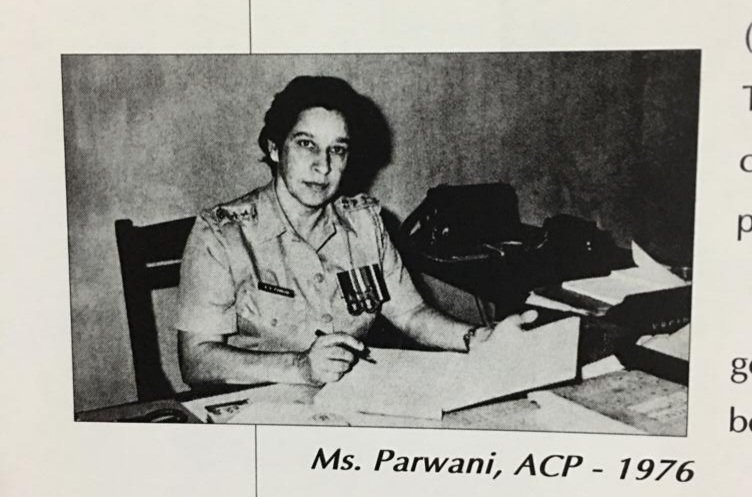
Today, the #MumbaiPolice have a healthy number of #women officers & constables. But do you know that they were drafted into the force due to the prohibition policy? Read this thread on #InternationalWomensDay2023
#WomensDay #InternationalWomensDay #police #Mumbai #Maharashtra


#WomensDay #InternationalWomensDay #police #Mumbai #Maharashtra



In 1937, the Bombay Province elected a Congress government under Premier B.G. Kher. In 1939, the government introduced a system of prohibition in Bombay city, with plans to cover the rest of the province later.
#WomensDay #women #InternationalWomensDay2023 #Maharashtra #history
#WomensDay #women #InternationalWomensDay2023 #Maharashtra #history

A prohibition branch, or ‘X branch’ as it was known, was carved out in the Bombay police. But, despite this, the police discovered that illicit liquor was still available in #Mumbai.
The police stepped up their vigil, and discovered that the number of pregnant women coming to the city from neighboring areas like Thane, had suddenly increased. But there was a catch. The protruding bellies of these women vanished when they left Mumbai by road or suburban train!
It was obvious that these women were mules for the illicit liquor smugglers. However, despite this revelation, the Bombay City Police faced a quandary. How were they supposed to frisk and arrest these women? For, it was an all-male force with no #women in its ranks!
If a woman suspect was to be picked up for questioning, a nurse from a government hospital had to be summoned. This was a time-consuming process and it was not possible for nurses to be present across the city to aid the police in the crackdown on illicit liquor.
This led to 22 lady ‘searchers’ being inducted into the prohibition branch at a salary of Rs 25 a month and free housing. This experiment was successful and the post of lady constables was created. These women searchers were absorbed as lady constables.
Thus, the genesis of the presence of women in the Mumbai police lies in the prohibition era!
But, this story does not end here. Women were recruited as officers or sub-inspectors only in 1947. And the man who did this was the grandfather of a braveheart policeman
But, this story does not end here. Women were recruited as officers or sub-inspectors only in 1947. And the man who did this was the grandfather of a braveheart policeman
A.E. Caffin, the last British police commissioner of Bombay (4 February 1947- 14 August 1947), first wrote to the government expressing the need for women police officers, but left before anything could be done about it. 

After independence, N.M. Kamthe, the grandfather of brave-heart IPS officer Ashok Kamthe, who was martyred fighting Pakistani terrorists in the 26/11 terror attacks, became the first Inspector General of Police (IGP) of the Bombay Province. 



Then, the state had no Director General of Police (DGP) and the IGP headed the force. N.M. Kamthe ensured that women were inducted into the force as sub-inspectors.
Kamthe once saw a “rowdy procession of women” whom his police were unable to control due to their sex. The constables were even hit by chappals “without the power to retaliate.” This experience gave Kamthe the idea of inducting “some strong, healthy women” & had them trained.
The next womens’ procession that tried to disturb the peace by creating a row on the street “got a fitting reception” at the hands of these police women!
Soon, Kamthe called for applications for the post of lady sub-inspectors. Shanti Parwani, a science graduate from the prestigious St Xaviers College in South Mumbai, saw the advertisement in the papers and met the expectations. 

She was personally interviewed by Kamthe and selected in 1947. A resident of Barrack road in South Mumbai, Parwani was a “novel presence” in the force and faced considerable resentment from the men. In 1948, she was joined by more women—the 2nd to be recruited was Sarla Deshmukh. 

Then, the Commissioner of Police, Mumbai, was J.S. Bharucha. He was the first Indian to hold office as #Mumbai's top cop and had taken over from Caffin. 

These women sub-inspectors were initially given tasks like bandobast during agitations, dealing with destitute women and children and raids of brothels. However, they soon made their mark in every aspect of policing.
The women were known as WSI or women sub-inspectors till then police commissioner Satish Sahaney (1993-95) got rid of the ‘W,’ bringing them at par with their male counterparts. 

Shanti Parwani rose to become an inspector in the CID in July 1962 and became an ACP in 1976. She was Mumbai’s first woman ACP. Sarla Deshmukh retired as a senior inspector of police. 

• • •
Missing some Tweet in this thread? You can try to
force a refresh









